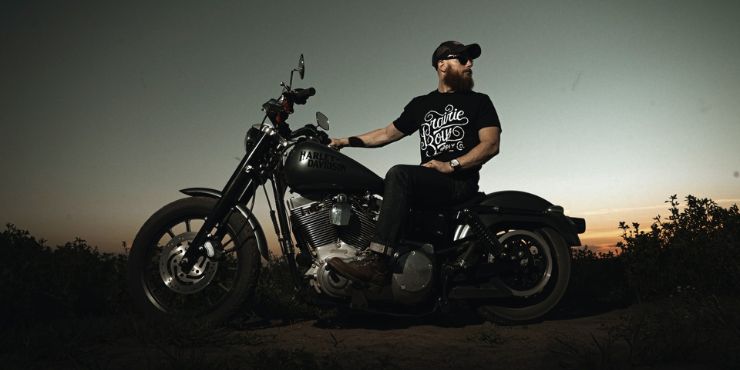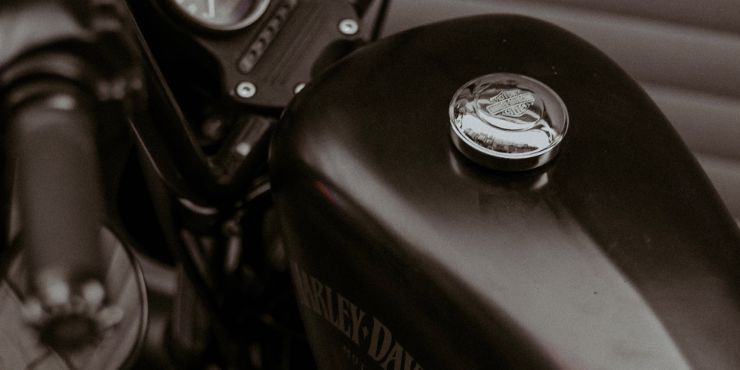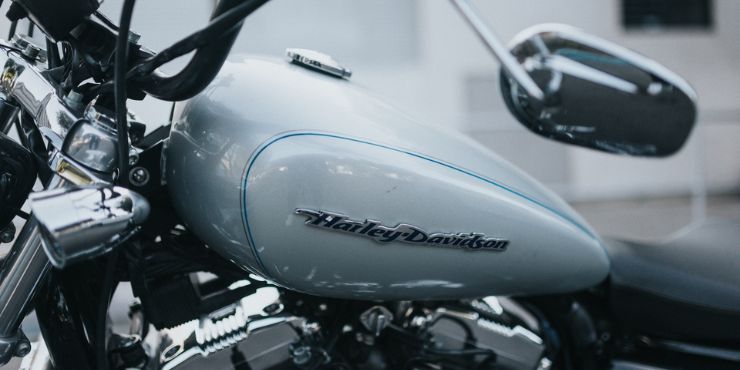Do you own a Harley-Davidson bike, and you’re wondering exactly how many gallons of gas your bike can hold? If so, then you’re in the right place!
The fuel capacity of Harley-Davidson motorcycles varies by model. A Street Glide holds about 6 gallons, while a Sportster typically holds around 3.3 to 4.5 gallons.
In this article, you’ll get to know all about how many gallons does a Harley Davidson hold, how fuel-efficient are Harley-Davidson motorcycles compared to other bikes, how far can your Harley-Davidson bike go on a tank full of gas, which Harley-Davidson bikes consume the most gas, which Harley-Davidson bikes are most fuel-efficient, and more. Stick around to know all the answers that you’re looking for.
How many gallons does a Harley-Davidson hold?
Harley-Davidson bikes are capable of holding between 2 to 6 gallons of gas, depending on the engine size and model. The fuel capacity of a small, lightweight Harley-Davidson bike is 2.1 to 3.5 gallons. Meanwhile, you can also expect a fuel capacity of 5-6 gallons on the Harley-Davidson flagship models. For your convenience, here’s a quick breakdown of the gas tank sizes of popular Harley-Davidson bikes.
- Harley-Davidson Forty-Eight: 2.1 gallons
- Harley-Davidson Iron 883: 3.3 gallons
- Harley-Davidson Roadster: 3.3 gallons
- Harley-Davidson Iron 1200: 3.3 gallons
- Harley-Davidson Street 500: 3.5 gallons
- Harley-Davidson Street Rod: 3.5 gallons
- Harley-Davidson Softail Standard: 3.5 gallons
- Harley-Davidson XL1200C Sportster: 4.5 gallons
- Harley-Davidson Fat Boy 114: 5 gallons
- Harley-Davidson Sport Glide: 5 gallons
- Harley-Davidson Street Glide: 6 gallons
- Harley-Davidson Road King: 6 gallons
- Harley-Davidson CVO Street Glide: 6 gallons
Which Harley-Davidson bikes consume the most fuel?
Any carbureted Harley-Davidson model uses more fuel compared to a fuel injected Harley-Davidson bike would. Carbs provided fuel mechanically on the carbureted Harley-Davidson bikes could reduce the bike’s average MPG. Now the new market standard, Harley-Davidson’s fuel injection system delivers and monitors fuel with CPU precision and regulation. Like other bikes with a carb, a carbureted Harley-Davidson model runs the risk of falling out of adjustment.
Not only do the resulting frequency of adjustments and carb inspections make the carb models higher maintenance, but sporadic changes will also lower the fuel economy. The injection system will monitor air temperature, elevation, air pressure, speed, and more. It’ll adjust the fuel inspection to keep the air while maintaining the fuel intake ratio to spec for efficient fuel mileage. For older carbureted Harley-Davidson bikes, carb, jet needle, and throttle should work in alignment to deliver fuel efficiently.
If the air shifts in pressure, quality, and temperature, the air supply might dwindle. Moreover, the fuel mix will start running rich, burning much more fuel than average. While the CPUs and ECUs on fuel-injected Harley-Davidson bikes adjust themselves according to the air quality and maintain efficiency, carbureted models need to be modified manually if the altitude shifts.
Ultimately, the simple mechanics involved mean that a carbureted bike uses more fuel compared to a fuel-injected Harley-Davidson model.
How fuel efficient are Harley-Davidson bikes compared to other brands?
Harley-Davidson bikes have an average mileage of 44 miles per gallon across models for city and highway riding. In comparison, other bikes like Kawasaki and Triumph can get mileage of 49 MPG and 47 MPG respectively.
The fuel efficiency in Harley-Davidson bikes is somewhere in the middle of the spectrum compared to other motorcycles in the same range. The lowest ones in the Harley-Davidson spectrum are the Street Glide, Road King, and Electra Glide models. These bikes average around 38 miles per gallon.
The way you ride your bike will greatly contribute to the average miles per gallon. Bikes like the Road Glide and Street Glide are intended for highway use. If you use them for stunts or bar hopping in the city, they’ll give poor gas mileage. Some bikers choose fun and power over fuel efficiency when it comes to Harley-Davidson bikes. With that said, many bikers use their touring bikes for touring, commuters for commuting, and carry out routine maintenance. This contributes greatly to higher miles per gallon average.
How far can a Harley-Davidson bike go on a tank full of gas?
An average Harley-Davidson bike gets between 120 and 200 miles on a full tank of gas. This depends on the fuel capacity and the style of the bike. For instance, the Harley-Davidson Street Bob features a tank capacity of 3.5 gallons. The Street Bob can easily give you around 160 miles on a full gas tank.
The fuel efficiency of a motorcycle is essential. Unlike cars, motorcycles have limited space for the fuel tank and can travel limited distances in between refills. Due to small fuel tanks, motorcycle owners rely on efficiency to get as many miles out of a gallon as they can.

It is important to note that motorcycles having higher-revving engines consume much more fuel. For instance, the 2014 Dyna Low Rider has a 4.7-gallon tank and averages 150 miles from a full tank. In comparison, a 2012 Harley-Davidson FXD Dyna Wide Glide has a 4.7-gallon tank and gives around 165 miles on average.
The former is a more aggressive bike, which means it gets revved high in lower gears. The sportier riders may drive down the average, whereas a reasonable rider can get more than 150 miles out of a full tank.
What do you mean by high mileage for a Harley-Davidson bike?
A Harley-Davidson bike that’s maintained, well-tuned, and ridden according to the brand’s suggested use offers gas mileage in the 45-54 miles per gallon range. This is the highest that a Harley-Davidson bike can go without any modifications on the motorcycle. Engine upkeep, riding conditions, and the rider’s habits greatly affect the mileage. Harley-Davidson’s FX Series is known to get more than 45 miles per gallon. These bikes are some of the most fuel-efficient options in the Harley-Davidson lineup.
By today’s standards, 160 miles or more on a Harley-Davidson bike is considered to be great mileage. Some other manufacturers of touring bikes in the same range get a lot more miles per gallon. As Harley-Davidson bikes are often ridden hard and fast, this isn’t really a fair comparison.
A stock Harley-Davidson bike with no notifications fares much better than aftermarket modifications, especially customizations with fuel, air, or exhaust. This happens as Harley-Davidson bikes are factory-tuned and designed such that all its engine components work in unity and achieve ideal average fuel efficiency.
Modifications introduce third-party parts into the mix. These parts are designed by other engineers for enhancing particular aspects of engine performance. This enhancement comes at a cost sometimes, and that cost is decreasing the miles per gallon.
Which Harley-Davidson bikes are the most fuel-efficient?
The Harley-Davidson Sportster bikes, which include the XL 883 and XL 1200 models, have fuel capacities that range between 3.3 and 4.5 gallons. These bikes feature miles per gallon ratings that range from 45 MPG to 59 MPG. The Harley-Davidson Sportster has a small stock tank, which makes it a double-edged sword of a choice if your priority is fuel economy.
The Harley-Davidson XL 883L Sportster, for instance, features a 3.3-gallon fuel tank. However, it can easily reach around 45 to 55 miles per gallon on a tank full of gas. For the XL Sportster series, a fuel-efficient Harley-Davidson bike doesn’t necessarily mean that the fuel tank is big. Half of the XL Sportster Series models feature fuel tanks below 4.0 gallons. However, they can still manage miles per gallon of over 59 MPG.

The models mentioned above have fuel tanks that range between 3.5 and 5 gallons. When talking about miles traveled, they can go between 38 and 48 miles per gallon, which is fuel-efficient for a Harley-Davidson bike.
Another factor that gets overlooked regarding fuel efficiency on bikes is the age of the bike. Older bikes are generally carbureted while newer ones are fuel-injected. Fuel injection is more efficient than carbureted bikes, boosting the MPG of Harley-Davidson bikes when it became the market standard.
Newer models in motorcycles have efficient technology for enhancing the engine’s performance while also keeping fuel consumption low. The motorcycle drags dead weight with low tire pressure and uses far more fuel. Unrelated technologies like Tire-pressure monitoring can be quite helpful for higher mileage. The technology helps with the longevity of the tires and the fuel efficiency of the cycle.
Conclusion
Thank you for reading. Hopefully, now you know a lot more about how many gallons does a Harley-Davidson hold, how fuel-efficient are Harley-Davidson motorcycles compared to other bikes, how far can your Harley-Davidson bike go on a tank full of gas, which Harley-Davidson bikes consume the most gas, which Harley-Davidson bikes are most fuel-efficient, and more. Harley-Davidson bikes can generally hold between 2 to 6 gallons of gas. This figure depends entirely on the engine size and the model of the bike. The fuel capacity of small Harley-Davidson bikes is between 2.1 and 3.5 gallons. Meanwhile, you can expect a capacity of 5-6 gallons on the Harley-Davidson flagship models.

